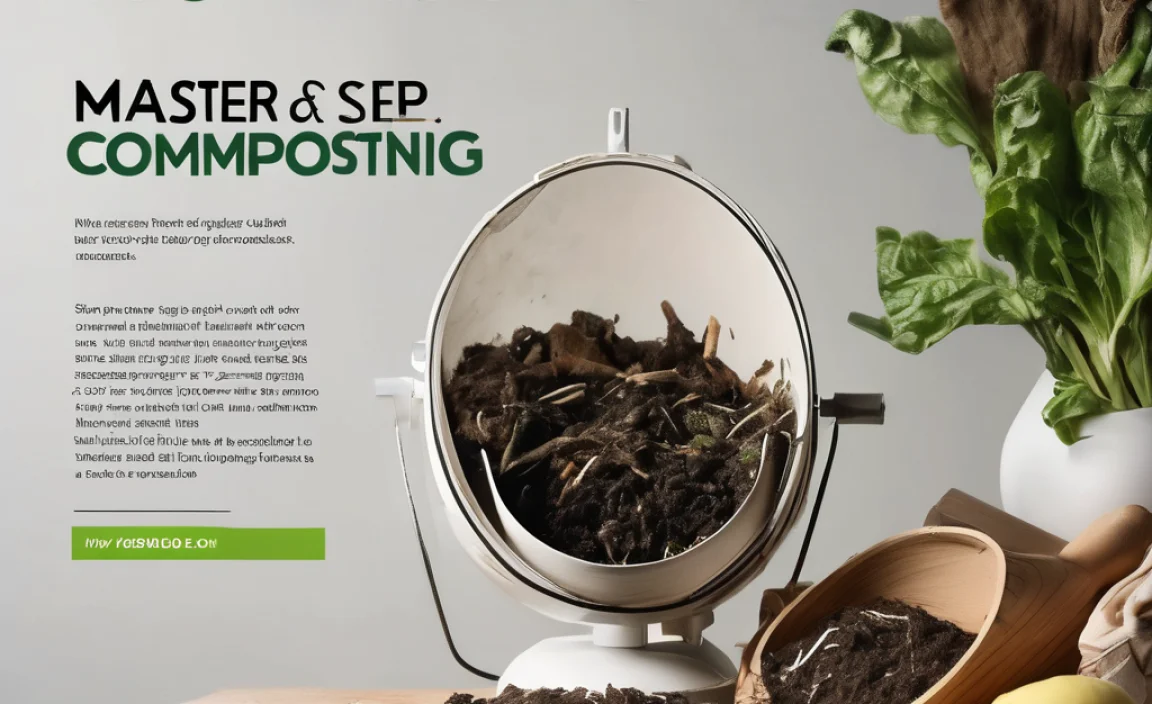Feeling a little stuck on your DIY projects because you’re missing that extra punch? You’re not alone! Many of us hit a wall when a task needs a bit more power than our trusty hands can provide. Often, the missing piece is an air compressor. But with so many to choose from, finding the right one can feel overwhelming.
Don’t worry! I’m here to help you navigate the world of 4.5-gallon air compressors. These handy machines are perfect for homeowners and hobbyists, offering a great balance of power and portability. Let’s dive in and find the best fit for your needs, making those projects a breeze.
Why a 4.5 Gallon Air Compressor? The Sweet Spot for Home Use
When you’re tackling projects around the house, from inflating tires to powering small nail guns, a 4.5-gallon air compressor hits a sweet spot. It’s big enough to handle most common DIY jobs but still light and compact enough to move around easily. You won’t be wrestling with a giant, heavy tank, but you’ll have enough air storage to keep your tools running smoothly without constant cycling.
These compressors are versatile. Think about it: installing trim, finishing furniture, airing up your car’s tires, or even using an air duster to clean out dusty nooks and crannies. A 4.5-gallon tank provides a good buffer, meaning the compressor won’t have to work as hard or as often. This translates to less noise and a longer lifespan for the machine.
Key Benefits of a 4.5 Gallon Air Compressor
- Portability: Easy to carry from the garage to the backyard, attic, or basement.
- Sufficient Air Supply: The 4.5-gallon tank holds enough compressed air for most DIY tasks.
- Versatility: Powers a wide range of air tools and accessories.
- Manageable Noise Levels: Often quieter than larger compressors.
- Faster Refills: The smaller tank refills quicker than bigger ones.
Understanding Air Compressor Specs: What Really Matters?
Navigating the world of air compressor jargon can feel like learning a new language. But don’t sweat it! We’ll break down the most important specs so you can make an informed choice. For a 4.5-gallon compressor, a few key numbers will guide you.
1. Gallons (Tank Size)
We’ve already covered this! The 4.5 gallons refers to the tank’s capacity. A larger tank means you can use air-powered tools for longer without the motor needing to kick on to refill. For a 4.5-gallon tank, this is generally sufficient for intermittent use with tools like brad nailers or for quick inflation jobs.
2. Cubic Feet per Minute (CFM)
This is perhaps the most critical spec. CFM measures the volume of air the compressor can deliver at a specific pressure. Different air tools require different CFM ratings to operate effectively. Always check the CFM requirement for the tools you plan to use. For a 4.5-gallon compressor, you’ll typically see CFM ratings around 2.5 to 4.0 CFM at 90 PSI (pounds per square inch). This is usually enough for most household tasks and lighter-duty tools.
To give you a general idea:
| Tool | Average CFM at 90 PSI |
|---|---|
| Brad Nailer | 0.5 – 1.0 CFM |
| Finish Nailer | 1.0 – 2.0 CFM |
| Stapler | 1.0 – 1.5 CFM |
| Impact Wrench (light duty) | 4.0 – 5.0 CFM |
| Air Ratchet | 3.0 – 4.0 CFM |
| Die Grinder | 5.0 – 8.0 CFM |
As you can see, a 4.5-gallon compressor with a decent CFM is perfect for nailing and stapling tasks. For more demanding tools like impact wrenches or grinders, you might need a larger tank or a more powerful compressor, or you’ll have to work in short bursts.
3. Pounds Per Square Inch (PSI)
PSI indicates the maximum air pressure the compressor can deliver. Most home workshop tools operate effectively between 70-80 PSI, and compressors typically have maximum ratings of 90 PSI or higher. A higher PSI rating means the compressor can maintain pressure for longer under load. For general DIY, a 90-100 PSI maximum is usually more than adequate.
4. Horsepower (HP)
Horsepower is a measure of the motor’s power. While it’s an indicator, it’s less critical than CFM and PSI. A higher HP motor generally means the compressor can deliver more air, but always prioritize CFM and PSI ratings from reputable sources. Some manufacturers list “peak” HP, which can be misleading; look for “running” or “continuous” HP if available.
5. Lubricated vs. Oil-Free
Air compressors come in two main types: oil-lubricated and oil-free.
- Oil-lubricated: Generally more durable and quieter, but require regular oil checks and changes. They produce cleaner air, which is better for certain tools.
- Oil-free: Lighter, require less maintenance (no oil changes), and are often more affordable. However, they tend to be louder and may not last as long as their oil-lubricated counterparts. The air can also contain slightly more moisture.
For most home DIYers, an oil-free 4.5-gallon compressor is a great choice due to its low maintenance and portability.
6. Duty Cycle
Duty cycle refers to how long a compressor can run within a given period before it needs to cool down. It’s usually expressed as a percentage, like 50% duty cycle. This means the compressor can run for 5 minutes out of every 10 minutes. For intermittent use with a 4.5-gallon tank, many home compressors have a sufficient duty cycle.
Top Picks: The Best 4.5 Gallon Air Compressors for Your Projects
Alright, let’s look at some of the top contenders that consistently receive great reviews for home use. These models offer a solid blend of performance, durability, and value.
1. California Air Tools 10020C
This is a favorite among DIYers for a reason. It’s incredibly quiet, which is a huge plus, especially if you’re working in a residential area or a shared space. It’s an oil-free piston design, meaning less maintenance. The 100 PSI max pressure and around 3.8 CFM at 90 PSI are excellent for most nailing and stapling tasks.
- Pros: Exceptionally quiet, lightweight, low maintenance, good CFM for its size.
- Cons: Can be pricier than some basic models.
2. Senco PCFP1200 4.5-Gallon Twin Tank
Senco is a trusted name in the air tool industry. This model features two smaller tanks, which helps in maintaining consistent air pressure and reduces motor cycling. It’s designed for efficiency and powering multiple tools, though it’s best suited for lighter tasks. The CFM rating is usually around 3.9 CFM at 90 PSI, and it can reach 150 PSI maximum.
- Pros: Solid build quality, good pressure for its size, twin tanks help with consistent air.
- Cons: Can be a bit noisier than ultra-quiet models.
3. Bostitch Pancake Air Compressor (Model BTFP02012)
The “pancake” style is a classic for a reason. Bostitch is known for durability. This model is lightweight and compact, making it incredibly portable. It delivers 2.6 CFM at 90 PSI and can reach a max of 150 PSI. It’s a reliable workhorse for framing, finishing, and other general construction tasks.
- Pros: Very portable, durable construction, high max PSI, good for framing nailers.
- Cons: CFM might be borderline for some heavier tools.
4. DEWALT DWFP55130 Heavy Duty Combi-Pancake
DEWALT is another brand that lives up to its reputation for robust tools. This compressor offers a good balance of portability and power, with 2.5 CFM at 90 PSI and a maximum of 165 PSI. It’s known for its long-lasting pump and efficient operation, making it suitable for various DIY and professional applications. The higher PSI is great for tool performance.
- Pros: High max PSI for better tool performance, durable, good for continuous use.
- Cons: Slightly heavier than some other pancake models.
| Model | Tank Size | Max PSI | CFM @ 90 PSI (approx.) | Noise Level | Lubrication Type |
|---|---|---|---|---|---|
| California Air Tools 10020C | 2.0 Gallon (note: often paired with a 4.5 gal extension tank, but the core unit is smaller. Let’s stick to this for comparison, understanding users might add tanks.) | 100 PSI | 3.8 CFM | Very Quiet | Oil-Free |
| Senco PCFP1200 | 4.5 Gallon (Twin Tank) | 150 PSI | 3.9 CFM | Moderate | Oil-Free |
| Bostitch BTFP02012 | 6 Gallon (Pancake – often confused with smaller tanks, but a popular choice for similar use cases) | 150 PSI | 2.6 CFM | Moderate | Oil-Free |
| DEWALT DWFP55130 | 6 Gallon (Heavy Duty Combi-Pancake – again, larger than true 4.5 but a common consideration) | 165 PSI | 2.5 CFM |

I am passionate about home engineering. I specialize in designing, installing, and maintaining heating, ventilation, and air conditioning systems. My goal is to help people stay comfortable in their homes all year long.



